President Ho Chi Minh visited Nghe An Mountainous Pedagogical School, December 9, 1961_Photo: Document
Ho Chi Minh's thoughts on developing ethnic minority cadres
Vietnam has 54 ethnic groups, including 53 ethnic minorities with over 14.1 million people, accounting for over 14.7% of the country's population (1) . Ethnic minorities reside mainly in mountainous, border, remote and isolated areas - areas with important strategic positions in terms of politics , economy, national defense, security and ecological environment protection. President Ho Chi Minh once advised the leaders of the Party and Government: "You all know that the mountainous areas of our country occupy an important position in terms of national defense and economy . Therefore, the Central Party and the Government, directly the Party committees at all levels, local committees, you, must find a way to improve the material and cultural life of the ethnic people... Doing so will both improve the lives of the ethnic people and contribute to providing the necessary things for the State " (2) .
He always had special affection for ethnic minorities, affirming that ethnic minorities are an inseparable part of the Vietnamese ethnic community. Immediately after returning to the Fatherland (January 28, 1941), he chose Cao Bang as a stopover, built Cao Bang and the northern mountainous provinces as revolutionary bases, and attached himself to the people. After the success of the August Revolution, in the “Letter to the Congress of Southern Ethnic Minorities in Pleiku”, dated April 19, 1946, he wrote: “The Kinh or Tho, Muong or Man, Gia Rai or Ede, Xe Dang or Ba Na and other ethnic minorities, are all descendants of Vietnam, all blood brothers. We live and die together, we are happy and miserable together, we help each other when hungry or full. In the past, we were separated from each other, one was because of lack of communication, two was because there were people who incited us to divide. Today, Vietnam is our common country. In the National Assembly, there are enough representatives of all ethnic groups. The government has the “MINORITY DEPARTMENT” to take care of all our compatriots” (3) .
He always reminded, “We must focus on training, fostering, and promoting cadres in mountainous areas. Of course, Kinh cadres must help local cadres, but we must do it in a way that helps local cadres progress, so that they can manage their own local work, not just cover up and do it for them” (4) . In there, The first requirement is to train, improve cultural level, build school and class types suitable for ethnic minority and mountainous areas. He told the cadres to "pay attention to developing schools for ethnic youth to both study and work", "to train local cadres who are both cultured, technically skilled, and good at work" (5) .
Talking to the people of all ethnic groups, he always advised that in order to develop their homeland, they need to be determined to study in order to constantly progress and develop. “If you are still weak, you must study, you must actively learn how to work, actively learn your profession to know. If you do not do it because you are weak, it will not work. There are many things you do not know, but if you are determined to study, you must know, definitely know. Knowing is progress” (6) .
President Ho Chi Minh also emphasized the work of planning ethnic minority cadres. According to him, training ethnic minority cadres is for use, and to use them effectively, it is necessary to take care of regular training, have specific and appropriate plans, and select and plan clearly. Leaders must "make every effort to train, educate and promote local and ethnic cadres. Even if at first local and ethnic cadres have low qualifications, little experience, and poor performance, leaders must guide and help them, and after a long time they will certainly improve" (7) .
He also paid special attention to developing the female cadre team. Speaking at the Conference of Women Cadres in the Mountainous Region (March 19, 1964), he affirmed, “Since the revolution succeeded and the resistance was victorious, the Party and the Government have made women and men equal, and all ethnic groups equal” (8) . Therefore, “women must try to study. Study culture, study politics, study a profession. If you do not study, you will not progress. If you are determined, you will definitely learn” (9) . He often reminded the Party Committees and authorities at all levels to pay attention and have a development strategy so that women can fully develop their abilities. At the Mountainous Propaganda Conference, when he learned that no female ethnic minority delegates were invited to attend, he severely criticized: “In all aspects of revolutionary activities, ethnic minority women have made great contributions. If a meeting like this forgets the role of women, then surely in the localities, you also forget the role of women” (10) .
Ho Chi Minh's thought on developing ethnic minority cadres has demonstrated a strategic vision on cadre work. From his thought, the work of building and developing ethnic minority cadres has always received special attention from our Party and State, considering it a key task in every revolutionary stage.
Officers supervise and guide poor households and ethnic minorities in Tay Hieu commune, Thai Hoa town on the honey beekeeping model to help sustainably reduce poverty_Photo: VNA
Results in building a team of ethnic minority cadres in Nghe An
Nghe An has 11/21 mountainous districts (accounting for 2/3 of the province's total area), with 248 communes, towns, 3,809 blocks, hamlets, and villages. The population of this area is more than 1.2 million people (accounting for 36% of the province's total population), including 39 ethnic minorities with more than 491 thousand people. With a 419km long border, Nghe An's mountainous districts are strategically important in maintaining national defense - security and socio-economic development in the province in particular, and the North Central region in general. Therefore, developing a contingent of ethnic minority cadres in Nghe An's mountainous districts is one of the key tasks of the Provincial Party Committee in recent times.
Imbued with the ideology of President Ho Chi Minh, in recent years, the Nghe An Provincial Party Committee has issued many resolutions, conclusions, and projects to gradually build and develop the contingent of ethnic minority cadres, such as: Resolution No. 18-NQ/TU, dated January 15, 2004, of the Nghe An Provincial Party Committee, "On consolidating and building the grassroots political system in ethnic minority and religious areas"; Resolution No. 04-NQ/TU, dated July 11, 2006, of the Nghe An Provincial Party Committee, "On the human resource development program for the period 2006 - 2010"; Project on training and fostering cadres and civil servants of communes in Nghe An province for the period 2012 - 2020; Project on improving the quality of education and training in mountainous and ethnic areas, associated with creating sources and training of ethnic minority cadres; Project on training and fostering grassroots cadres in communes, wards and towns, focusing on cadres in communes of 10 mountainous districts, period 2001 - 2005; Project on training ethnic minority cadres, female cadres, grassroots cadres, promising young cadres, period 2006 - 2010...
With the right orientation and methodical approach, the work of developing ethnic minority cadres in Nghe An has achieved encouraging results. The quantity and quality of cadres in agencies, units and localities throughout the province have been gradually improved. Ethnic minority cadres, especially key cadres, after participating in training and fostering courses, have promoted their capacity, strengths, and consolidated their expertise, contributing significantly to the effectiveness of leadership, direction, management and task implementation.
In the period of 2020 - 2023, Nghe An province recruited 272 civil servants and public employees from ethnic minorities, out of a total of 1,288 recruited people, accounting for 20.9% (11) . As of December 2023, the whole province has 9,159 civil servants and public employees from ethnic minorities currently working in agencies, units and localities (accounting for 13.3% of civil servants and public employees in the whole province). Of which, the provincial level is 1,560/16,565 people (9.4%); the district level is 5,054/42,541 people (11.9%), the commune level is 2,580/9,382 people (27%) (12) . The use of ethnic minority cadres is carried out by agencies and units on the basis of job positions, linked to work capacity and expertise, ensuring relative harmony and rationality. In addition, the management and evaluation of cadres is also focused on, the evaluation and classification results are the basis for planning, appointing, re-appointing, training and fostering cadres, civil servants and public employees in general and ethnic minority cadres in particular. The quality of the ethnic minority cadre team is gradually consolidated and improved, increasingly affirming its role and position in the work.
The work of planning ethnic minority cadres has been of interest to the Standing Committee of the Provincial Party Committee and Party committees at all levels, and has been carried out in a coordinated manner between the province and the district, the district and the commune, and between agencies and units. As a result, the proportion of ethnic minority cadres in the planning from the province to the grassroots level since the beginning of the 2020-2025 term has basically been ensured according to regulations, specifically: The proportion of ethnic minority cadres in the planning of the Provincial Party Executive Committee is 14/105 comrades, accounting for 13.33%; the planning of the Provincial Party Standing Committee is 5/24 comrades, accounting for 20.83%; the planning of key cadres is 2/22 comrades, accounting for 9.09%. The proportion of ethnic minority cadres in the planning of the district Party Executive Committee is 203/1,052 comrades, accounting for 19.3%; The planned number of members of the district Party Committee Standing Committee is 44/486 comrades, accounting for 9.05%; the planned number of key positions at the district level is 83/577 comrades, accounting for 14.38%. At the commune level, the planned number of members of the Party Executive Committee is 1,630/8,996 comrades, accounting for 18.12%; the planned number of key positions is 1,531/16,088 comrades, accounting for 9.52% (13) ...
The arrangement and use of cadres in general and ethnic minority cadres in particular are carried out in accordance with regulations, ensuring strict, democratic and public procedures. From 2020 to December 2023, the provincial level elected 3 ethnic minority cadres to participate in the Provincial Party Executive Committee, 1 comrade to participate in the Provincial Party Standing Committee; 1 comrade, the chairman of the district People's Committee, was transferred and appointed as the head of the provincial ethnic committee. The district level transferred and transferred 23 comrades from the district to the commune, 18 comrades from the commune to the district, 133 comrades from one commune to another in the district and 44 comrades were transferred from one department to another ( 14) ...
In addition to the achieved results, the work of developing ethnic minority cadres in Nghe An still has some limitations. There is still an imbalance in the proportion of ethnic minority cadres in the political system, many agencies and units do not have ethnic minority cadres. The work of recruiting and using cadres is not effective, the arrangement of cadres in localities, especially at the grassroots level, is still inadequate, not in accordance with the trained expertise. Training and fostering work still has many shortcomings, the quality, content, and training programs are not linked to practice, leading to an imbalance in the use of job positions. The number of ethnic minority cadres who have received formal and systematic training accounts for a small proportion, the leadership capacity and performance of many comrades do not meet the requirements. Many localities are still confused in the work of creating resources...
The above limitations and weaknesses are due to many causes, including specific causes of geographical and natural characteristics in mountainous areas with difficulties, poor infrastructure, limited investment resources, and backward customs and practices. The average income per capita in mountainous areas is only 50% of the national average. Mountainous districts are bordered by Laos, and the issue of illegal migration is complicated. Hostile forces take advantage of the difficulties of ethnic minority areas to distort and divide the great national unity bloc... These are barriers to the building and development of ethnic minority cadres in Nghe An.
Preserving the traditional bamboo and rattan weaving craft in Diem village, Chau Khe commune, Con Cuong district, Nghe An province_Photo: baonghean.vn
Solutions to develop ethnic minority staff in Nghe An in the coming time
One is Nghe An It is necessary to continue to thoroughly grasp and flexibly and creatively apply the Party's guidelines and policies on developing ethnic minority cadres, in accordance with the characteristics of the situation and requirements of the locality. Promote the building of the great national unity bloc on the basis of equality, regardless of region or ethnicity, "ensuring that all ethnic groups are equal, united, respect, and help each other to develop together" (15) in the spirit of the Resolution of the 13th National Party Congress.
Second, continue to review and re-evaluate each stage of personnel work, especially the recruitment of ethnic minority cadres, civil servants and public employees. It is necessary to ensure that recruitment is based on the right capacity, strengths, and is suitable for the job position and practical conditions of each locality. The province needs to research and propose appropriate mechanisms for the recruitment, use and development of ethnic minority cadres, in order to be in line with the Party's policies and guidelines, and to have flexible, creative and appropriate application in the locality.
Third, mobilize the strength of the entire political system in socio-economic development in the mountainous areas of the province. Invest in upgrading, completing, and building new infrastructure, promote educational development, improve health care conditions, and improve the material and spiritual life of the people. "There is a mechanism to promote the positivity, self-reliance, and self-reliance of ethnic minorities in socio-economic development, and implement sustainable multidimensional poverty reduction" (16) .
Fourth, research and propose the Central Government to build a special mechanism in local socio-economic development, paying attention to the work of building and developing ethnic minority cadres. In addition to the common characteristics, it is necessary to base on regional culture, geographical location, and socio-economic characteristics of each locality to have appropriate separate policies.
Fifth, Nghe An needs to propose and develop plans for developing a team of ethnic minority cadres that are appropriate and closely linked to the realities of mountainous areas to help this area develop further and catch up with the plains and urban areas. In addition to the general policies of the State, the province needs to have its own appropriate policies to call for investment from domestic and foreign enterprises, especially investment in developing human resources for this area./.
--------------------------
(1) “Press release Results of the survey to collect information on the socio-economic situation of 53 ethnic minorities in 2019”, Database on the socio-economic situation of 53 ethnic minorities, Ministry of Ethnic Minorities and Religions , https://thongkedantoc.vn/thong-bao_5.html, July 3, 2020.
(2) Ho Chi Minh: Complete Works , National Political Publishing House Truth, Hanoi, 2011, vol. 14, p. 166
(3) Ho Chi Minh: Complete Works, Ibid., vol. 4, p. 249
(4) Ho Chi Minh: Complete Works, Ibid., vol. 13, p. 270
(5) Ho Chi Minh: Complete Works, Ibid., vol. 14, p. 164
(6) Ho Chi Minh: Complete Works, Ibid., vol. 12, p. 212
(7) Ho Chi Minh: Complete Works, Ibid., vol. 11, p. 523
(8) (9) (10) Ho Chi Minh: Complete Works, Ibid., vol. 14, pp. 262, 263, 158
(11), (12), (13), (14) See: Vu Hong Hao: "Nghe An: Building and improving the quality of ethnic minority cadres", Nghe An Provincial Party Committee's Electronic Information Portal, https://nghean.dcs.vn/vi-vn/tin/nghe-an--xay-dung--nang-cao-chat-luong-doi-ngu-can-bo-dan-toc-thieu-so/156332-364187-180520, October 9, 2023.
(15), (16) Documents of the 13th National Congress of Delegates , National Political Publishing House Truth, Hanoi, 2021, vol. I, pp. 50, 170.
Source: https://tapchicongsan.org.vn/web/guest/thuc-tien-kinh-nghiem1/-/2018/1088402/van-dung-tu-tuong-ho-chi-minh-trong-xay-dung-doi-ngu-can-bo-nguoi-dan-toc-thieu-so-o-nghe-an.aspx


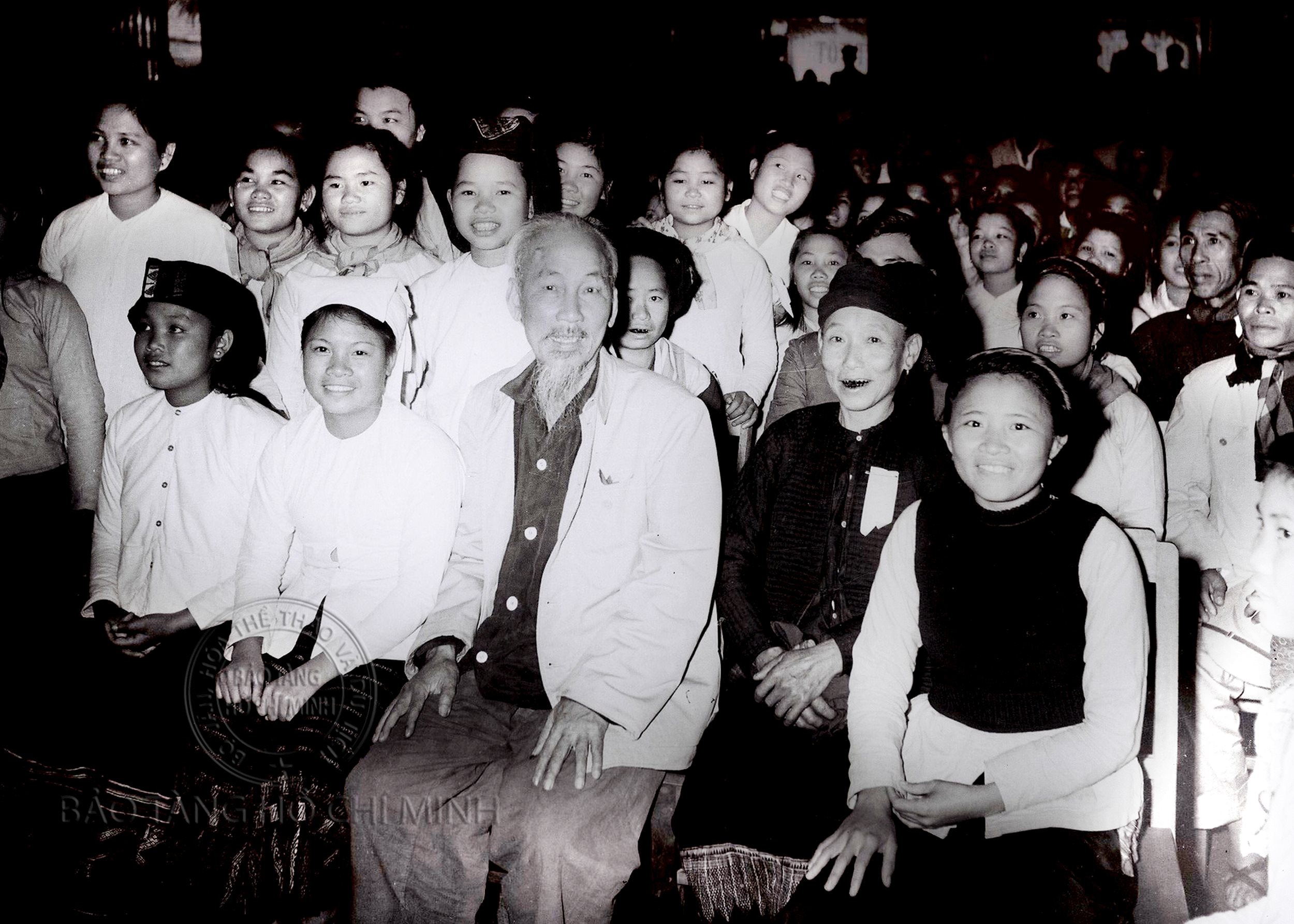
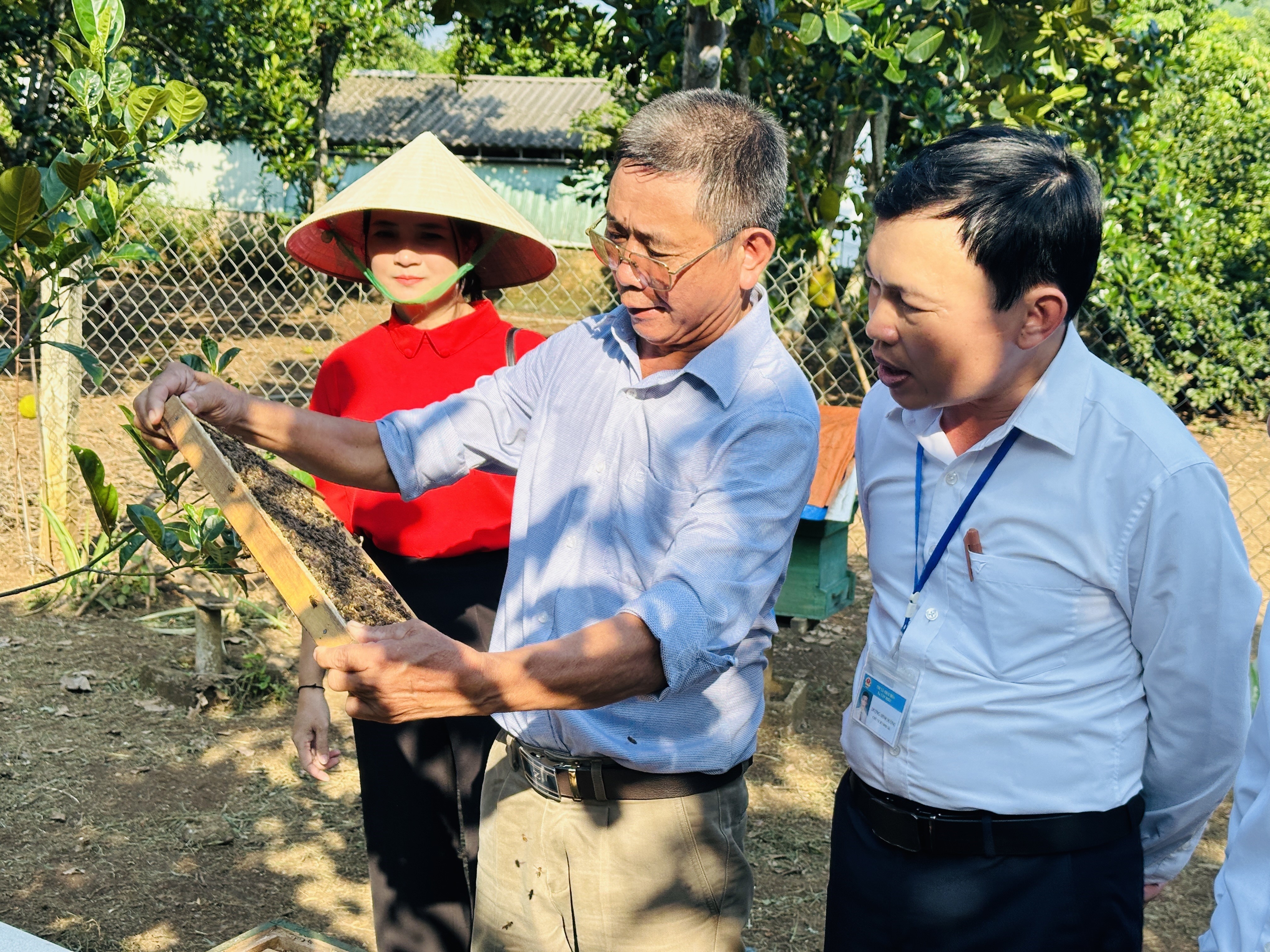
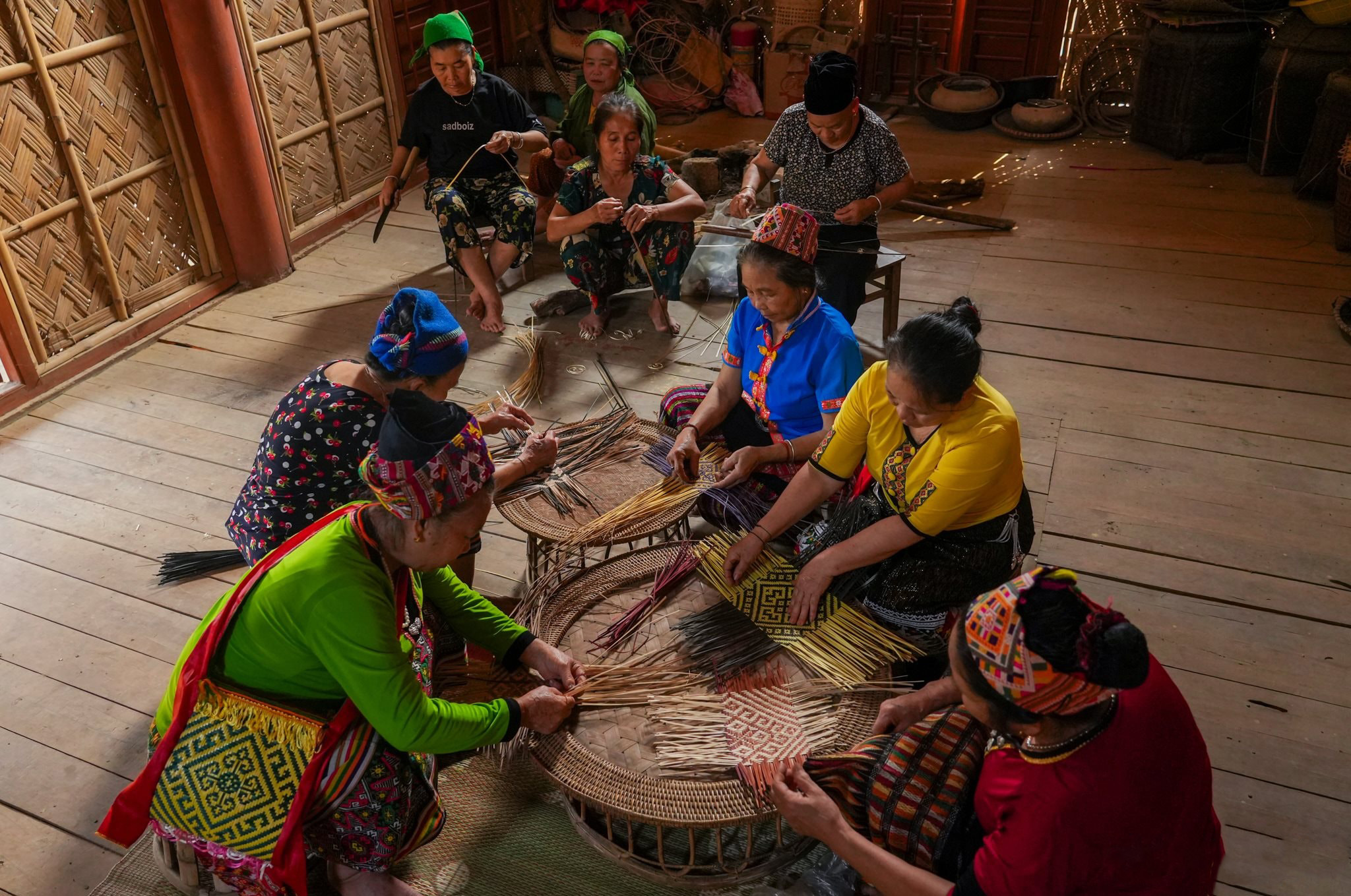
![[Photo] Vietnamese and Hungarian leaders attend the opening of the exhibition by photographer Bozoky Dezso](https://vphoto.vietnam.vn/thumb/1200x675/vietnam/resource/IMAGE/2025/5/28/b478be84f13042aebc74e077c4756e4b)
![[Photo] 12th grade students say goodbye at the closing ceremony, preparing to embark on a new journey](https://vphoto.vietnam.vn/thumb/1200x675/vietnam/resource/IMAGE/2025/5/28/42ac3d300d214e7b8db4a03feeed3f6a)

![[Photo] General Secretary To Lam works with the Central Policy and Strategy Committee](https://vphoto.vietnam.vn/thumb/1200x675/vietnam/resource/IMAGE/2025/5/28/7b31a656d8a148d4b7e7ca66463a6894)

![[Photo] Prime Minister Pham Minh Chinh receives a bipartisan delegation of US House of Representatives](https://vphoto.vietnam.vn/thumb/1200x675/vietnam/resource/IMAGE/2025/5/28/468e61546b664d3f98dc75f6a3c2c880)






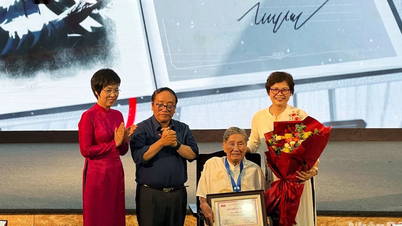

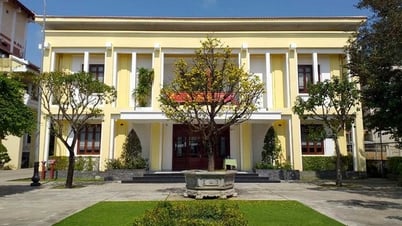























































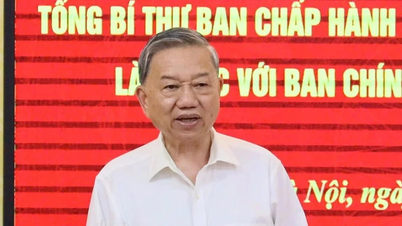

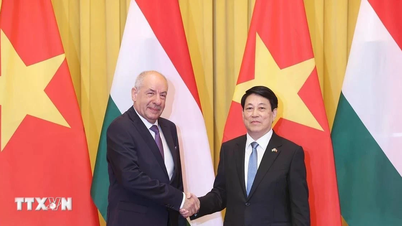
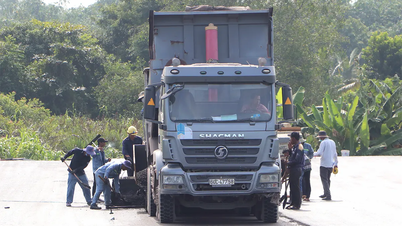


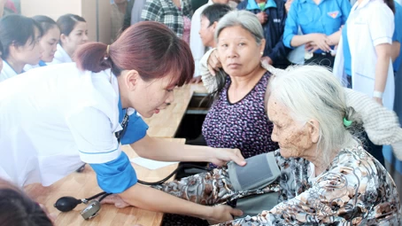









Comment (0)